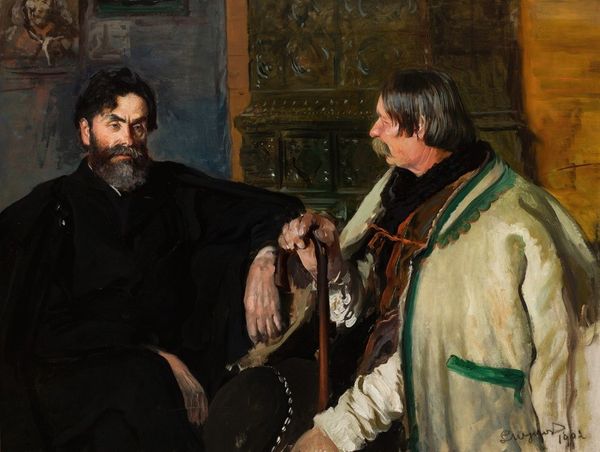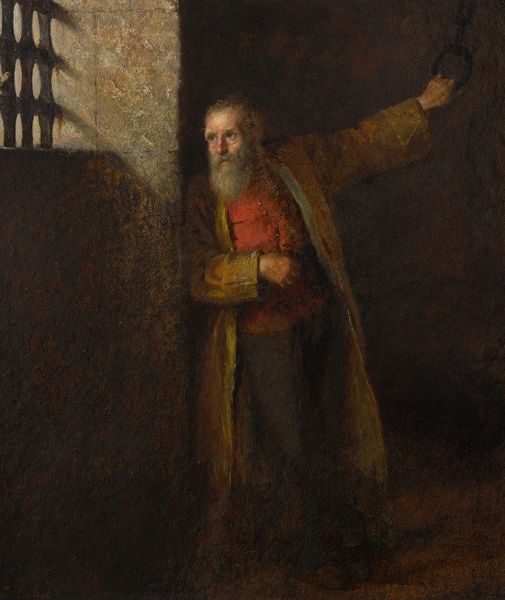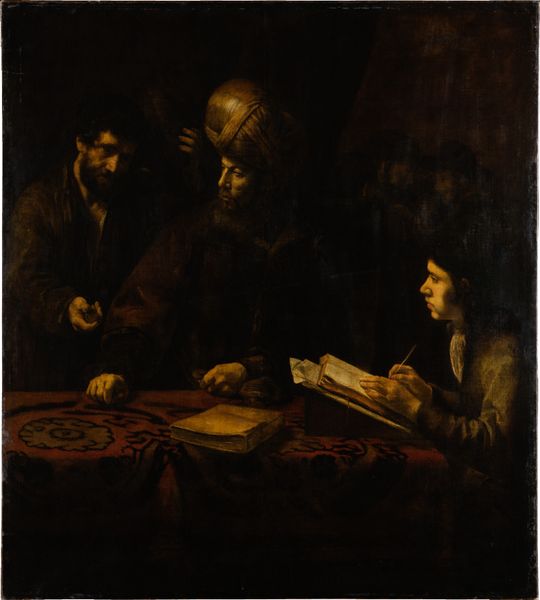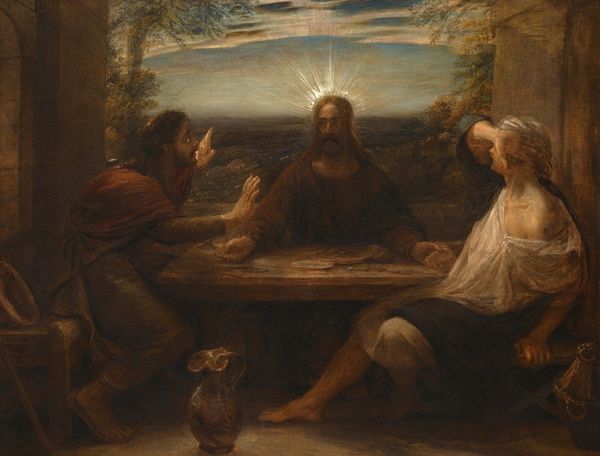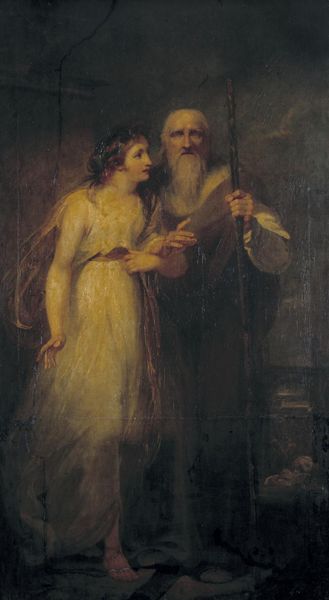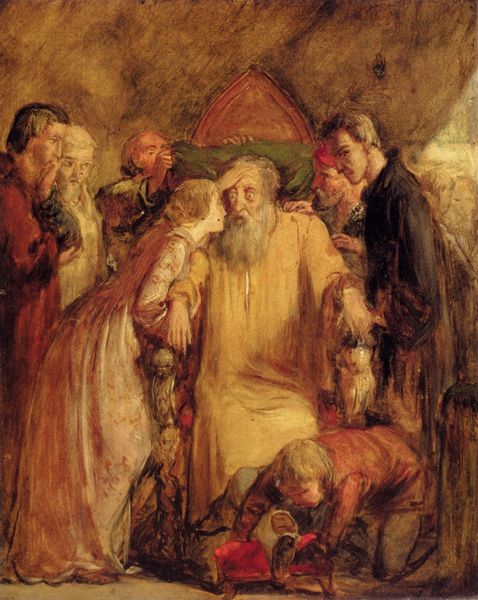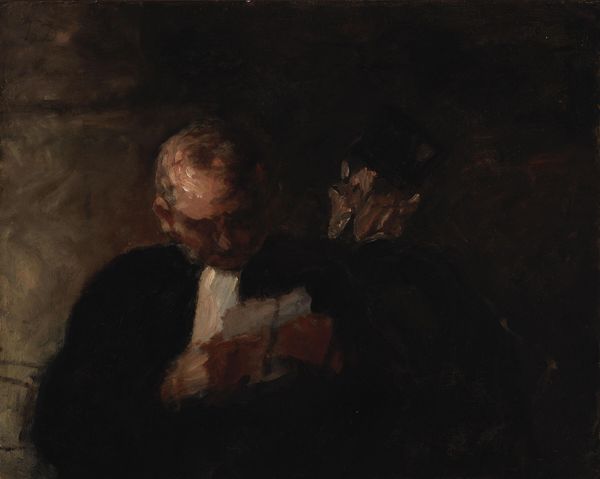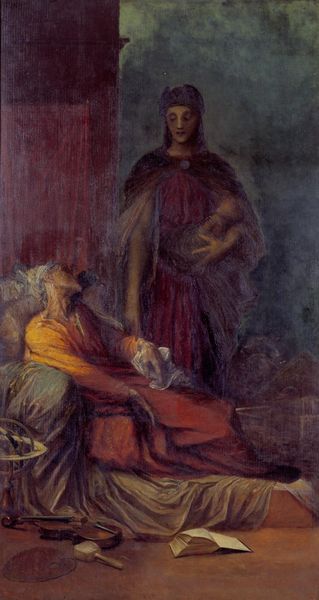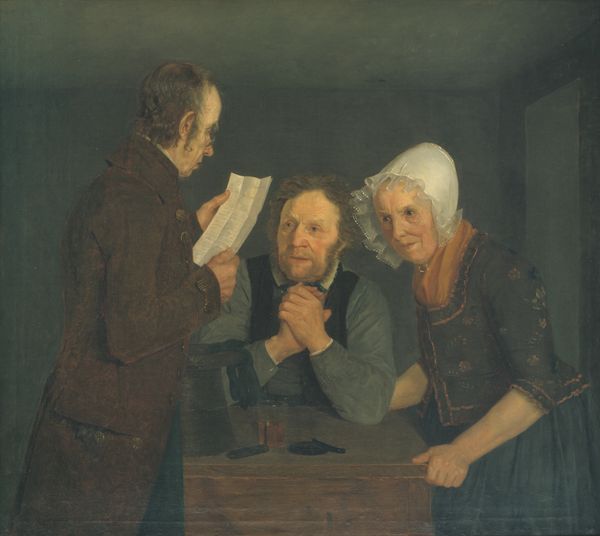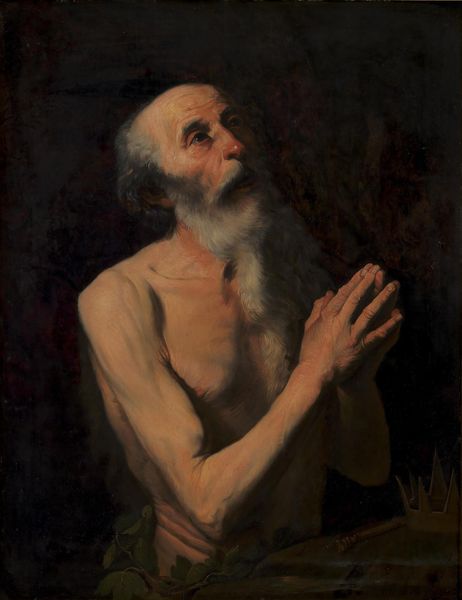
Dimensions: 129.5 × 105.7 cm (51 × 41 7/8 in.)
Copyright: Public Domain
Editor: We’re looking at Henry Ossawa Tanner's "The Two Disciples at the Tomb," painted around 1906. It’s an oil on canvas currently at the Art Institute of Chicago. There's such a strong sense of mystery and somberness radiating from this painting. What do you see in this piece, beyond the obvious biblical reference? Curator: For me, Tanner's work operates within a powerful intersection of faith, identity, and historical context. As an African American artist navigating a prejudiced art world, Tanner reframes biblical narratives through the lens of marginalized experience. Look at the faces of the disciples—they’re not the idealized figures we often see in religious art. Editor: No, they seem… ordinary. More human. Curator: Exactly! Tanner humanizes them, inviting a different kind of empathy. Consider also the symbolism of the tomb itself, a void but also a space of potential rebirth. What might resurrection mean beyond the purely religious in the context of African American life at the turn of the century? Editor: Hope amidst oppression? A striving for something beyond their immediate reality? Curator: Precisely. Tanner was deeply interested in spiritual narratives. Tanner had trained in Paris at Academie Julian. These choices of place, subject and treatment open our understanding beyond the simple story and places this painting into dialogue about racial and cultural representation, allowing the exploration of profound themes of faith and liberation, using impressionist techniques and themes. Editor: I hadn't considered that intersectionality so directly, that a religious painting could also function as a commentary on social and racial dynamics of the time. It's really powerful to think about how Tanner layered so many meanings. Curator: And it invites us to consider our own contemporary understanding of faith, social justice, and artistic representation, doesn't it? Editor: It does, definitely. I’m going to look at Tanner's other works with fresh eyes now!
Comments
No comments
Be the first to comment and join the conversation on the ultimate creative platform.
